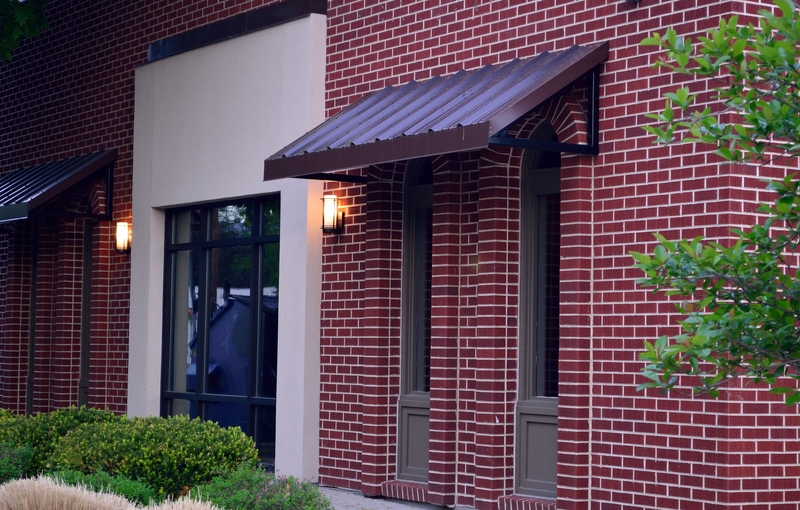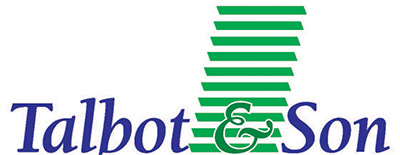If you’re looking to enhance your outdoor space with a shading solution, you may have come across the terms “awning” and “canopy.” While both provide shelter and protection, they serve different purposes and come with unique features. Understanding these differences is essential to choosing the right option for your needs, whether you’re looking for a stylish addition to your home or a practical cover for outdoor events. Let’s dive into what each of these shading solutions offers and how they compare.
What is an Awning?

Awnings are an elegant and functional addition to any building, providing both aesthetic appeal and practical benefits. Essentially, an awning means a secondary covering attached to the exterior wall of a building. It is a permanent fixture once installed, making it an excellent option for creating shade and protection in areas where space is at a premium.
Awnings are particularly beneficial for small to medium-sized outdoor areas such as patios or decks. Since they are fixed to a building and do not require vertical supports, they leave the space open and unobstructed, which is especially desirable in more compact areas.
What is a Canopy?

Unlike awnings, canopies are freestanding structures that offer versatile shelter solutions for both sunlight and rain. They are not restricted by size or attachment points to buildings, making them perfect for covering large areas.
Canopies are ideal for creating extensive shaded areas in your garden or on larger patios. They can serve various functions, from enhancing outdoor social spaces, perfect for garden furniture, parties, or barbecues to providing robust protection against the elements.
Key Differences between Awnings and Canopies
Understanding the specific features and applications of awnings and canopies can greatly influence your decision when choosing the right shading solution for your outdoor space. This guide will delve into the fundamental differences between these two options, helping you determine which is best suited to your needs.
1. Installation and Portability
Awnings
Awnings are commonly installed as permanent or semi-permanent fixtures to the exteriors of buildings. This installation ensures a stable and durable setup that can last for years without the need for frequent adjustments.
Particularly for retractable awnings, while they do offer the flexibility to be extended or withdrawn to suit weather conditions and personal preferences, they are still anchored permanently to the building.
This setup is ideal for those who prefer a reliable shading option that doesn’t require setup or takedown efforts.
Canopies
In contrast, canopies are designed with flexibility and mobility in mind. Typically freestanding, canopies rely on a framework that can be easily assembled and disassembled, allowing them to be transported and set up in various locations as needed.
This makes them particularly suitable for temporary events such as weddings, garden parties, or market stalls. Some models of canopies are designed to be more permanent, but these are less common compared to their portable counterparts.
2. Durability and Weather Resistance
Awnings
Awnings are constructed to endure a wide range of weather conditions. Fixed awnings are robust, often made from materials that can withstand sun, rain, and wind over many years.
Retractable awnings add a layer of functionality by allowing homeowners or business operators to pull them back during extreme weather conditions, such as heavy storms or snowfall, which helps prevent potential damage and extends the awning’s life.
Canopies
Canopies offer immediate shelter from elements like sun and light rain, making them ideal for occasional outdoor use. However, their suitability for adverse weather conditions such as heavy winds or snowfall can be limited unless they are specifically engineered for such challenges.
Canopies made for more rigorous outdoor use typically feature stronger materials and more secure anchoring systems to enhance their stability in challenging weather.
3. Coverage Area
Awnings
Awnings are particularly well-suited for providing targeted coverage over specific areas such as windows, doors, or small patios. The extent of coverage is generally dictated by the structure to which they are attached, limiting how far they can project outward. This makes awnings ideal for direct, focused shade and protection, ensuring that these smaller areas are usable regardless of the weather conditions.
Canopies
Conversely, canopies excel in their ability to cover large spaces. Their design allows for a significant span over open areas, free from the constraints of direct attachment to a building. This capability makes canopies perfect for covering extensive outdoor spaces like event venues, large patios, or even temporary marketplaces. Whether you need a sunshade for a large gathering or a cover for an outdoor exhibition, canopies provide the necessary versatility and scale.
4. Cost and Maintenance
Awnings
Awnings typically require a higher initial financial outlay, particularly if opting for retractable models equipped with automated mechanisms. This investment reflects the durability and the advanced technology that retractable awnings offer, allowing them to be easily adjusted to changing weather conditions or user preferences.
Despite the initial cost, awnings generally demand minimal maintenance once installed. They are built to endure the elements and only need occasional cleaning and checks to ensure their mechanisms remain in good working order.
Canopies
In contrast, canopies usually come with a lower upfront cost, making them an attractive option for those needing temporary or flexible shelter solutions.
However, the need for regular assembly and disassembly, especially with portable models used for events, can lead to higher ongoing maintenance requirements. Portable canopies must be properly cared for, involving regular cleaning, careful storage, and periodic checks to ensure the structural integrity of the frames and fabric.
5. Impact on Interior Spaces
Awnings
Awnings have a significant impact on the interior environments of buildings. By providing shade directly over windows and doors, they block excessive sunlight, which can dramatically reduce indoor temperatures during hot weather.
This shading helps protect interior furnishings from UV damage, preventing fading of fabrics, carpets, and furniture.
Additionally, by reducing the reliance on air conditioning systems during peak heat, awnings can contribute to lower energy bills, making them an environmentally friendly addition to any home or commercial space.
Canopies
Canopies, meanwhile, are designed to enhance outdoor spaces without directly affecting the interiors of buildings. They are ideal for extending usable outdoor areas by protecting from the sun and rain, thus enhancing comfort for outdoor activities.
Since canopies do not influence interior temperatures or sunlight exposure directly, their impact is confined to the outdoor settings where they are installed, making them perfect for creating hospitable outdoor environments for social gatherings, dining, or recreational activities.
6. Application
Awnings
Awnings are perfect for residential properties where sun protection and outdoor comfort are needed. They are commonly installed over patios, decks, and along windows and doors to extend living spaces and enhance the home’s energy efficiency.
Commercially, awnings are invaluable for businesses seeking to improve their curb appeal and customer comfort. They provide sheltered walkways, enhance outdoor seating areas, and can be customized with business logos and colors to serve as effective branding tools.
Canopies
Canopies on the other hand, shine in the event hosting arena, where flexible, temporary shelters are necessary. They are easily set up at different venues, making them suitable for weddings, fairs, and markets, providing guests with protection from the weather.
For recreational purposes, canopies offer a portable solution to create shaded areas in parks, gardens, or beaches. They enhance the comfort of outdoor leisure activities by protecting against sunburn and heat exhaustion, making outdoor environments more enjoyable.
Enhance Your Outdoor Space with Talbot and Son
Understanding the differences between awnings and canopies is crucial for selecting the appropriate shading solution for your needs. Both awning and canopies are preferred choices depending on the personal requirements. At the end of the day, choosing between an awning and a canopy is upto you.
Assess your specific requirements, considering factors like location, usage, and budget, to make an informed decision that will enhance your outdoor experience.
At Talbot and Son, we offer a wide range of high-quality awnings and canopies to suit various needs. Whether you’re looking for a retractable awning for your patio or a garden canopy for outdoor events, we have the perfect solution. Visit our showroom in Union Mills to explore our dedicated collection of curtains, blinds, and shutters.
Our expert team is on hand to help you find the best shading solution for your home or business. Get inspired by browsing our gallery to see stunning examples of awnings and canopies in real outdoor spaces. Ready to transform your outdoor space? Call us at 01624 629940 for expert guidance and top-quality products.














